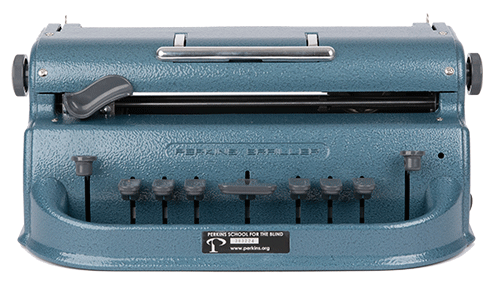The release of ‘O’ levels results earlier this month brought me back to the days when I was a student.
Life as a blind student when I was studying back in the year 2000 was so different as compared to now. There were mainstream Secondary Schools that support blind students but none for post-Secondary. At my Secondary School, blind students were exempted from some subjects like Chinese (they were not taught Chinese in Primary School) and Physical Education. During these lessons, we would head to a room where teachers would transcribe the printed materials into Braille for the blind students to read. After we submitted our homework in braille, the teachers had to translate them to Microsoft word documents for regular marking. We also took our tests and examinations separately because the manual Perkins typewriters were very noisy and the noise distracted other students.

In those days, Assistive Technology was not available and computers with screen-readers were not commonly used. There were cupboards for us store our Braille textbooks, which were in huge volumes. Just for my Additional Mathematics textbooks, there were 23 volumes in Braille!
At the end of Secondary School, based on our results from the Preliminary examinations, we could qualify to attend Junior College for three months while waiting for the release of the O-levels results. Unlike in Secondary School, where there were resources set aside for blind students, in Junior College, you had to approach every lecturer and tutor for the materials. Thankfully, the two schools I attended supported me when I was with them. There were no separate rooms for blind students, so I sat for my faculty tests at the benches outside the auditorium.
Thereafter, we were totally on our own in the university. I attended a university that offered distance learning as my degree programme was linked to an overseas institution. Convincing the university to admit me was one hurdle; convincing the lecturers to let me attend their classes was another. Lessons were tape-recorded and replayed when I was back at home. Most of the recordings did not make any sense because they were all "Use this into this", "Take this and put here" or "Let's look at this slide". There was a need to rely on friends to read out and record the materials in a meaningful way for me. Diagrams like graphs would also have to be described. Blind students also had to produce their own Braille notes.
Fortunately for me, I could arrange with my overseas university for Braille reading materials and exam-related requests. Things were a lot easier because I could email my university to submit assignments. For my examination, I had to take it outside the examination hall again with the Perkins typewriter.
Nowadays, post-Secondary education has become more inclusive. There are special needs offices on the campuses where blind students can get assistance throughout their studies. There are also access arrangements for students with special needs. Financial assistance schemes such as the Special Education Needs (SEN) fund and Assistive Technology Fund (ATF) also help to defray the cost of purchasing assistive technology devices.
Today, with support from family, friends, and a more accessible and inclusive environment, students with disability face fewer barriers and are able to pursue the courses of their choice. With the right support and accommodations, students of all abilities can pursue their dreams and fulfil their potential.
Tan Siew Ling is fully Deafblind, having lost both her sight and hearing to a neurological condition, Neurofibromatosis type 2 (NF2). She carries a screen reader with a Braille display, which she fondly names it as “Bear Bear”, everywhere she goes. Her humour, wordplay, and love of puns keep friends on their toes. She enjoys reading books in her free time and loves to pen down her thoughts, often on a whim, which can be entertaining at times, on her social media. When she is not writing or reading, she can be seen doing insanely 72kg leg presses or swinging a 20kg kettlebell to and fro. You can find out more about Siew Ling and her journey here.